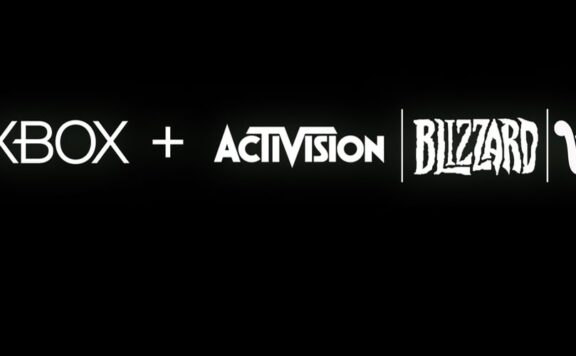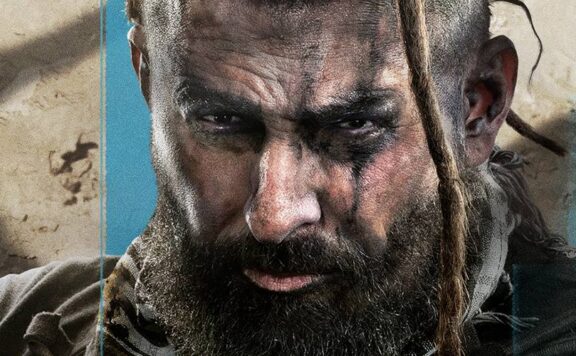There can’t be many other games that can claim to have completely influenced the overall concept of a generation’s gaming. Wolfenstein 3D, when it launched way back in 1992, was not just revolutionary. It was a pivotal, defining moment in video games which has remained unmatched since. There were, of course, games viewed from the first person before but nothing that was as polished, as properly implemented or as finished as Wolfenstein. Without Wolfenstein 3D we wouldn’t have Doom, Quake, TimeSplitters, Call of Duty, Halo or Killzone.
Given the popularity of the genre and the sales it generates (pumping money into developers and publishers) it could be argued that there would be a lot of other, non-FPS games that would never have been made too. In short: Wolfenstein, perhaps more than any other franchise, made home-gaming what it is today.
The latest in the franchise uses IdTech 4, the ageing game engine previously seen in Doom 3 and Quake 4. Developers Raven have managed to squeeze probably the last drop of functionality out of the engine but it is showing its age. Textures are low-resolution and complex lighting effects are thin on the ground. There are some lovely liquid effects and from a distance the textures can be made to look pretty good but Wolfenstein is not going to win any beauty contests. Character models are adequate and their animations, though sometimes repetitive (boss fights in particular), are solid enough.
The game-play revolves around the same special agent that we guided through that Nazi castle in 1992. B.J. Blazkowicz resembles Nathan Drake if he’d let himself go and put on a few pounds. The game starts by setting the scene, a lengthy cut-scene (before the player has any control at all) introduces B.J. by showing him skilfully and fluidly taking down Nazis before being surrounded. Luckily for us, our hero is saved by a bright blue explosion which clears the Nazis and introduces the game’s supernatural hook. Unfortunately the flowing combat of the opening scenes only serves to underline the fact that there is no fluidity of complex movement once you gain control of B.J.
The supernatural aspect of the game, mixed with the Nazi regalia, gives it an interesting feel, similar to Raiders of the Lost Ark or Bulletproof Monk. The game has the Nazis researching a mysterious power called Black Sun which enables them to upgrade their soldiers and weapons. Over the course of the game you are introduced to your own set of supernatural powers which give you access to The Veil – essentially a hidden world which exists in a different dimension to ours – as well as powers to slow down time, shield yourself and power-up your bullets. Each power can only be used for a limited time and are refilled at points which are plentifully dotted around your route.
Whilst it is an interesting mechanic, essentially a medallion which grants you powers (upgrading as you progress through the game and find new crystals). It never feels totally like a part of the same game as the solid and accomplished gunplay. Putting the supernatural powers on the D-Pad means that you have to take a thumb away from movement (on the left stick) to activate them. This is a minor concern but over the course of the game it gets more and more frustrating as your “Veil power” needs to be spared and timed to clear certain sections.
There are simple puzzles to be solved using one of the four supernatural powers but nothing that ever requires more than a few seconds of thought. Wolfenstein’s mythology lends itself to a number of strange weapons including a plasma beam and a Tesla gun which arcs electricity. Whilst interesting and visually pleasing, these weapons are totally unnecessary as most of the game can be run through using only the two submachine guns and the brilliant rifle. Doubly so thanks to the massive amount of ammunition that can be found for these weapons. There is never a time when you might have to preserve ammo or resort to a rush-and-melee approach. In fact, on normal difficulty I spent most of the game with a full ammo belt standing amongst piles of shiny ammo refills. The game’s few simple bosses are signposted with rooms stacked with ammo refills so firepower is definitely not going to be your problem.
There is a comprehensive upgrade system in place for the weapons (and powers) whereby you spend money earned or found by purchasing upgrades via black-market vendors. The usual recoil-dampening and improved-sighting are joined by ammo-count upgrades and reload-time improvements. Money is thin on the ground so you will have to choose your upgrades wisely but as previously mentioned, it is possible to go through the game with only the three regular firearms so I never considered upgrading anything else and had a perfectly adequate amount of money available for that purpose.
The difficulty ramps up well with one or two little spikes but nothing that is ever going to cause you to die more than a few times before you work out the trick to completing a section. There is absolutely no reason why you should not be able to complete the story mode in well under six hours. You could probably do it in four or five if you ignored all the side missions and just thrashed the main storyline.
My overwhelming feeling whilst playing the game was that it was a lot of fun but in an old-fashioned way. There is no cover mechanic, the movement feels slightly unwieldy and heavy and the missions, though assigned from a faux-open-world hub, are extremely linear. Even the excessive loading screens reminded me of the shooters of a few years ago. The problem with loading screens becomes more and more of an annoyance as you progress. Restart checkpoints being located just before cut-scenes are another loading-related annoyance because you get the cut-scene (although they can be skipped, it’s just inconvenient) each time you die and restart.
I like what Raven have tried to do with the central hub-town of Isenstadt where you receive your missions but the unfortunate implementation means that it actually makes the game feel more stunted. You receive a mission in one sector of the town and make your way through the semi-open-world town to a transition point (usually a gateway or a vehicle) which may take you to your mission start or it may take you to another section of the town which you then have to progress through to another transition point to take you to your mission so that’s two extra loading screens between mission assignment and mission start.
Once out of the town and into a mission, things get extremely linear. It really is reminiscent of shooters like Quake and the first Medal of Honour games where you can only travel down one corridor to your goal. There might be the odd side-room to duck into but that’s really all the route-variation you will find.
Multiplayer is class-based (Soldier, Engineer and Medic) and allows all weapons from the start (although upgrades are unlockable). There are only three modes though, Team Deathmatch, a defend-and-attack-style game called “Objective” and a timed objective-based game called “Stopwatch”. The multiplayer is reasonably populated (at the time of writing) and functional without ever being anything special. One interesting twist is that each class has their own supernatural power which adds a little bit of variation but probably won’t be enough to keep the multiplayer alive for anyone but the most dedicated.
So the graphics are good but not great, there are too many loading screens and the game-play is extremely linear. The gunplay is solid and the supernatural stuff is functional, if a bit clunky and unimaginative. It sounds fairly negative so far but the saving grace for Wolfenstein is the game-play. Yes, it is a bit old-fashioned, there isn’t anything revolutionary or groundbreaking and there are several other games out there that do similar things in a much more accomplished way. The one thing Wolfenstein has in spades is fun. There is no stealth section, no sniping (although if you want you can snipe) and nothing else to get in the way of the non-stop run-and-gun action.
This game is totally unashamed of itself. I get the feeling that the starting point for Wolfenstein was not to make a game which could compete with other WWII shooters (Call of Duty or Brothers in Arms) or even with supernatural shooters (Bioshock) but to make a game that was reminiscent of the beginnings of the genre. If that was the case then they have completely succeeded. Wolfenstein feels almost like a tribute to the history of the genre rather than a development in its future but that might not necessarily be a bad thing.
Wolfenstein is a lot of fun. There are some flaws but for fans of the genre who want to fill a couple of afternoons whilst waiting for the FPS big-hitters to be released it should be enjoyable enough. If you are new to the genre it might be a good starting point as the difficulty curve never leaves you behind and the linear nature of missions means you will never be at a loss for direction. It’s well-paced with a steady supply of things to shoot at. It would be nice to have a few more types of enemy rather than ninety percent being standard soldiers but what there is comes thick and fast. It is certainly not the most accomplished example of the genre though and for those people who like an FPS but are on a limited budget it might not be worth the ticket price.
Score: 7/10








